What are clothes rivets and how to install them?
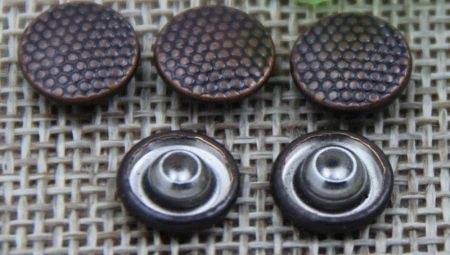
Among the huge variety of sewing accessories, rivets are one of the most popular and irreplaceable elements. They can be found not only on any clothing, from simple underwear to heavy sheepskin coats and fur coats, but also on belts, shoes or bags. Proven clothing manufacturers usually try to use accessories of appropriate quality, however, even from a branded shirt or jacket, the rivet can come off. In order to save your favorite thing, you need to know how to choose and replace a damaged fastener, and what they are like.

Species overview
In professional slang, the rivet is called holniten. This is a special element of an outfit that allows you to fix its floors, pocket flaps or straps. The holniten consists of a leg and a cap, each of which, in turn, consists of two elements that reinforce each other on the fabric.
The front part with the leg is called "dad", and the lower purl, into the hole of which the leg enters, is called "mom".
All the variety of rivets that can be purchased in specialized sewing stores and on websites can be divided into several types, depending on the classification. For example, depending on the purpose, all holnitens can be divided into:
- utilitarian - those that are used directly as fasteners;
- decorative - those that decorate clothes and accessories.
The former are sometimes almost invisible, while the latter can be with various engravings, rhinestones, even made in the form of metal spikes or figures. They also come in square, diamond or star shapes. These spikes are often found on various rock paraphernalia or motorcycle clothing.
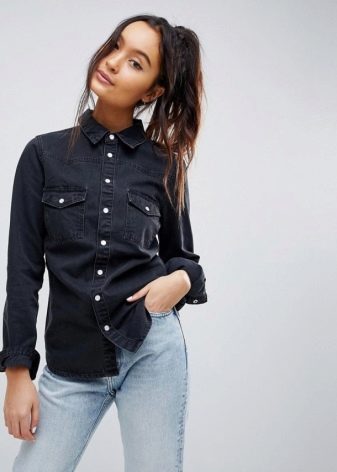
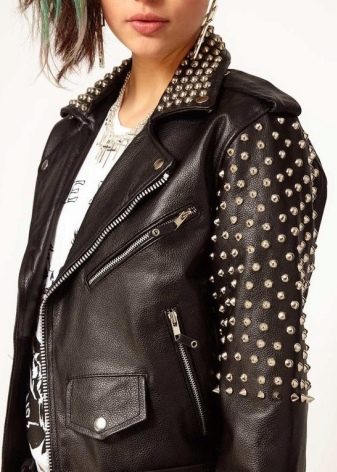
According to the method of fastening to the fabric, rivets are divided into:
- sew-on - those that are attached to clothes with threads, like ordinary buttons;
- punching - those that fix themselves through a hole in the fabric.

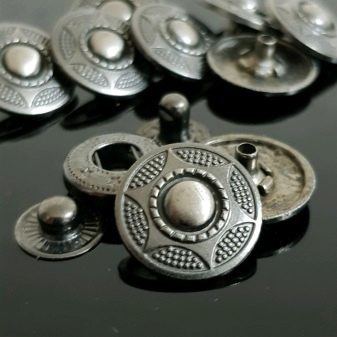
Another popular way to classify holniten is to view them from the seamy side.
- Unilateral - with open leg and flat base. They are often used when sewing jeans or trousers, when the seamy side of the product will not be visible during wear.
- Bilateral - their leg is closed from the inside with a decorative cap, as well as from the front side. Such rivets are made for outerwear and accessories.
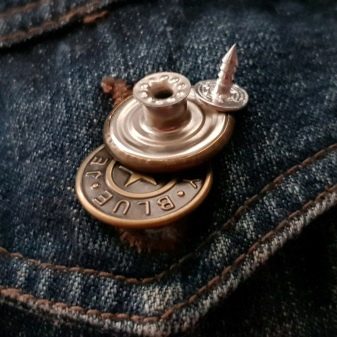

By size and design, rivets can also be divided into several varieties.
-
Omega - a simple ring button made of two all-metal parts with a circular spring-loaded fastening at the top. Their size ranges from 9.5 to 15 mm. Used for thick fabric or leather.
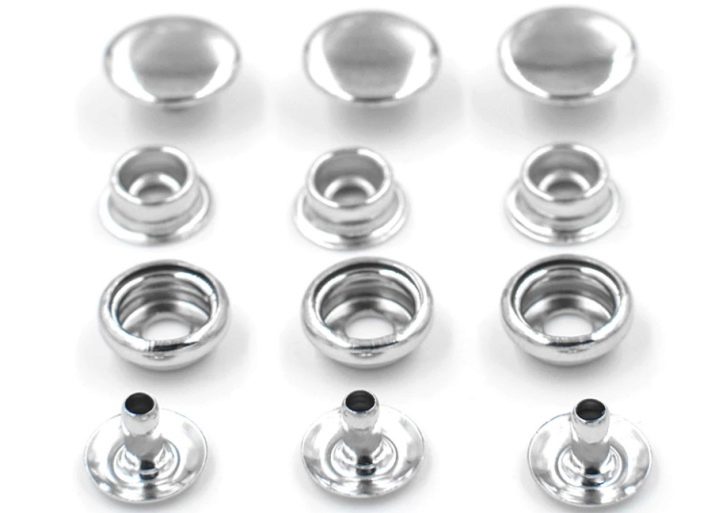
-
Alpha - the most popular type of buttons, which are often also called S-shaped, since the spring of their lock is similar to the English letter S. They can also be used with leather and fabric products. The size ranges from 27 to 40 mm.

-
Shirts - are fixed to the fabric using several teeth. Such rivets are placed on thin fabrics, so they are often used for children's clothes. Shirt collars can be sized from 6.5 to 20 mm.
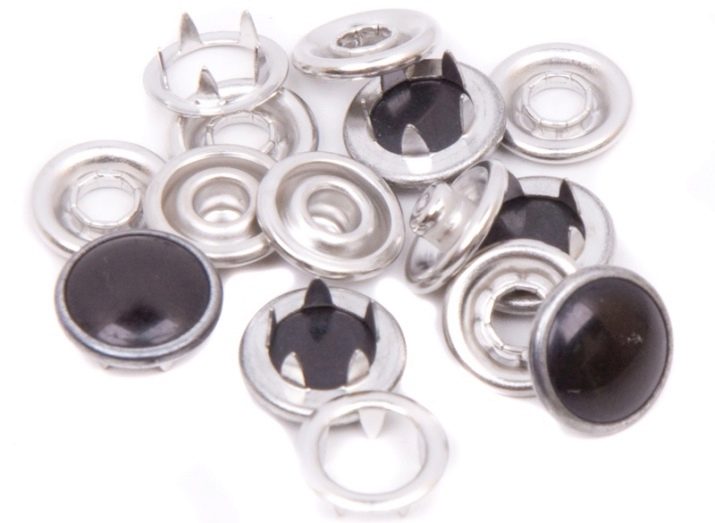
-
Magnetic - their principle of connection is based on the mutual attraction of two magnets, from which the "mom" and "dad" rivets are made. Most often they are used for sewing various accessories: bags, backpacks, wallets and others.
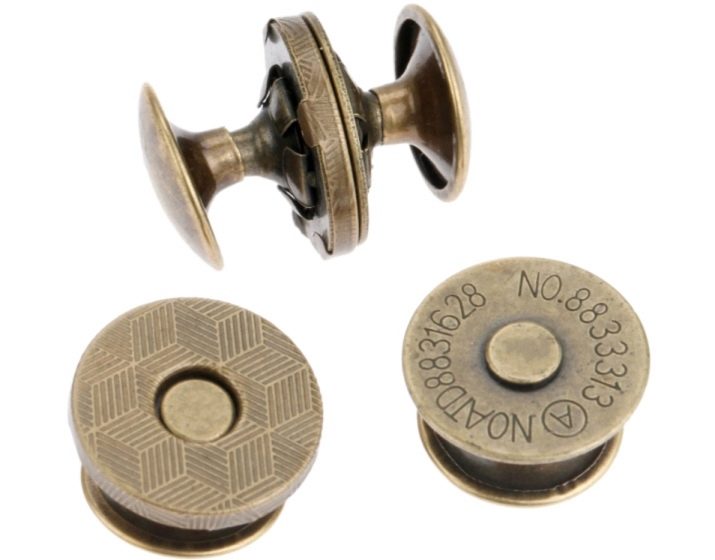
-
Holster - with a screw-like connection of its components. They are also used for bags, cases, belts and other leather goods.
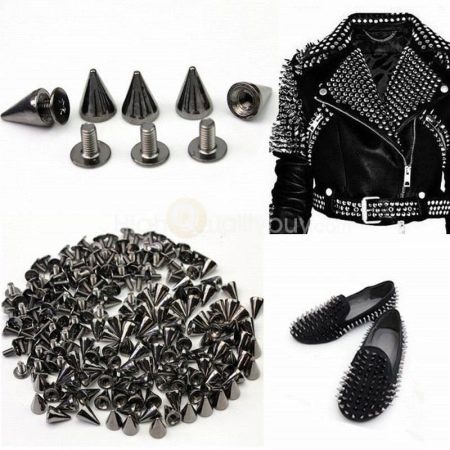
- Klyamernye - with a ring fastening on the lid. Unlike conventional rivets, their lower part is a through grommet, through which the leg of the upper part is visible in the fastened state.
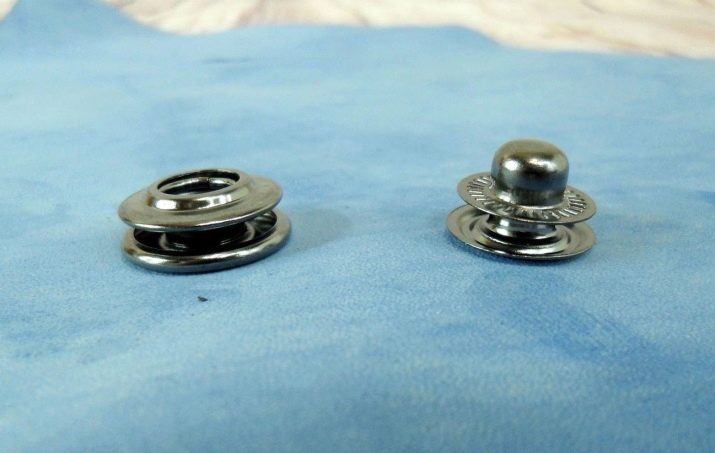
And the last way to classify holniten is by the material from which they are made:
- metal;
- plastic;
- ceramic.
Various metal rivets are the most popular. They are used for sewing outerwear and ordinary clothes, accessories, shoes and everything else. Plastic rivets are often sewn on toddler clothing and underwear. And ceramic is mainly used as decoration.
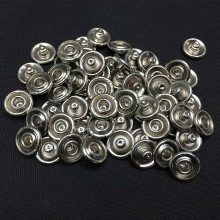
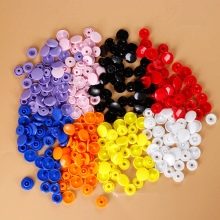
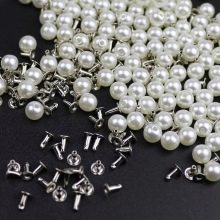
Popular manufacturers
Among the popular manufacturers of rivets and other sewing accessories, there are both foreign and domestic manufacturers.
NewStarButton
Turkish manufacturer and direct supplier of high quality sewing accessories, fabrics and equipment. They work without intermediaries, which can significantly reduce costs and, consequently, prices for final products. On sale there are both whole sets of ready-made rivets, as well as services for the manufacture of custom-made decorative elements.
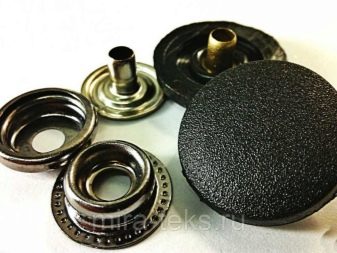

Hemline
Australian sewing accessories company founded in 1950 by the Castley family. Their conspicuous packaging among customers was called "pink blister" and has gained considerable popularity around the world. Products are manufactured in Hong Kong and sold through intermediaries not only in our country, but also in Japan, India and even the United States. In addition to regular and curly rivets, Hemline produces a huge variety of goods for patchwork, quilting and scrapbooking.
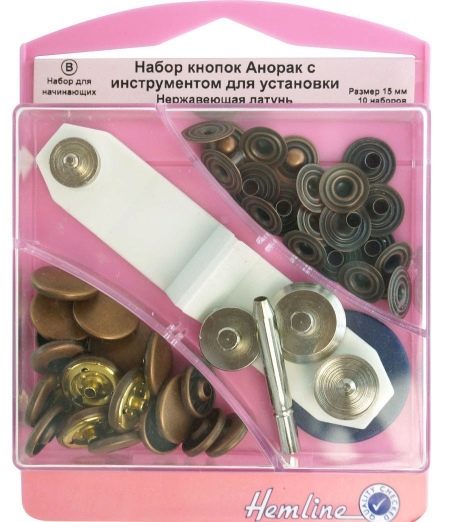
Tierra cast
The American manufacturer, which everyone knows, is definitely familiar to many. The company focuses not only on quality, but also on the safety of its products for the buyer, carefully measuring the lead content in products.

Prum
One of the oldest family-owned enterprises in Germany for the production of sewing products - from sewing needles to electronic embroidery machines. The price of their products is high, but the quality deserves the highest praise.
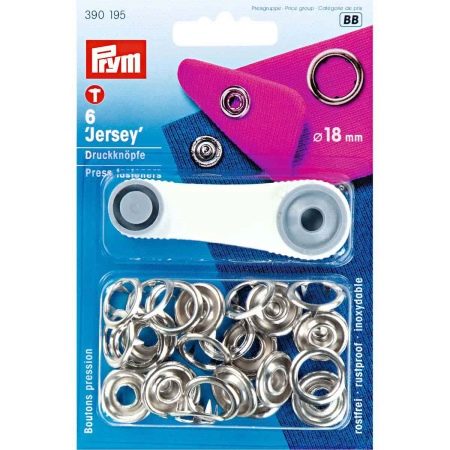
SAB
A brand that is a leader in the production of sewing accessories and equipment in China, which has become more and more popular in the domestic market in recent years. Compared to other Asian manufacturers, their quality is an order of magnitude higher, while the price is significantly lower than European counterparts.

Buckle Expert
Russian company that produces plastic sewing accessories. Their sew-on plastic rivets are eagerly purchased by many manufacturers of children's and teenage clothing.
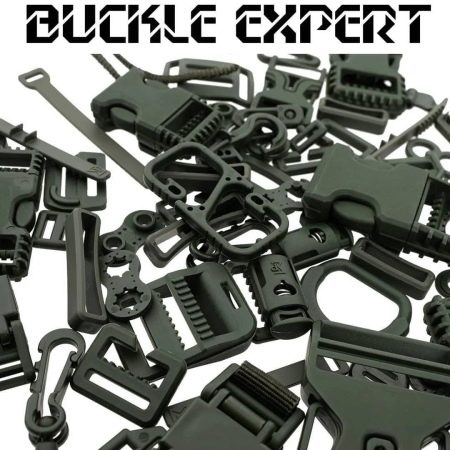
"Omtex"
Omsk manufacturer working with small sewing factories and shops throughout Russia. They produce both standard fittings and work with individual orders.
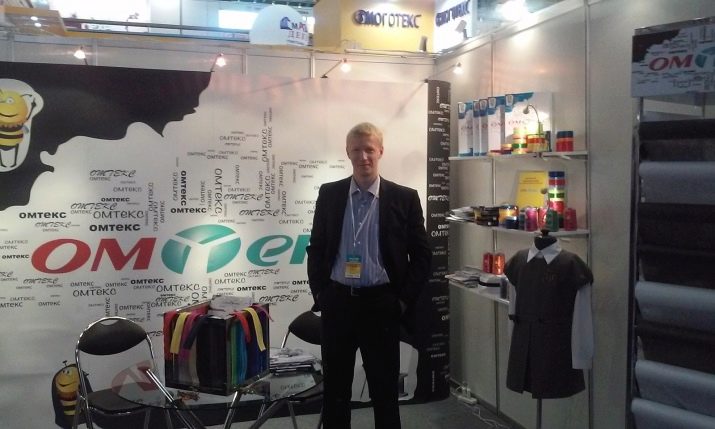
How to install?
Changing a sewn-on cap is no more difficult than a regular button, but installing a piercing rivet is much more difficult. The main difference between the punch rivet is the need for a hole in the fabric. And the thicker the fabric, the more difficult it is to pierce it. Therefore, professional seamstresses working with dense fabrics and leather use a special press or tongs for this. They greatly simplify the installation process of the holniten.
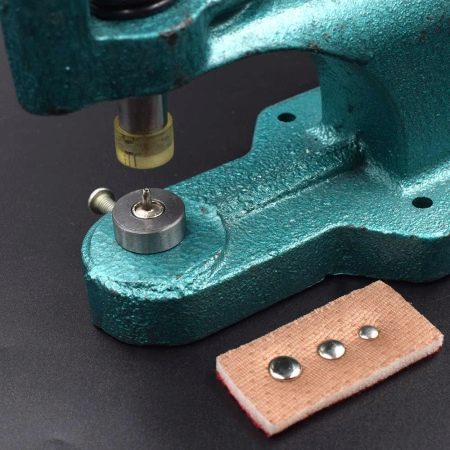
It is good if there is special equipment available, but most often you have to use what is always at hand:
- hammer;
- pliers;
- awl;
- an ordinary nail.
The installation process itself begins with the preparation of all parts of the rivet, tool and fabric. If you need to replace an old, deteriorated button, you must first carefully remove it from your clothing. If a new button is installed, then you will need to carefully mark the place of its installation with chalk or pencil directly on the fabric.

The step-by-step installation process is as follows.
- Use a nail or an awl to make a new hole in the fabric, if necessary.
- On the upper part of the product (floor, valve), the details "father" and "mother" are applied from the front and back sides of the hole, respectively.
- The leg of the “daddy” should be threaded through the hole in the fabric, and the loop of the “mommy” must be put on the inside of it.
- Putting the front side on a flat surface, with a hammer or a bat, you need to gently but strongly tap the leg so that its petals split and lock in the loop.
- The fastening of the second part to the bottom of the garment is carried out in the same way.
If the installation is suddenly unsuccessful, do not try to fix it with great efforts, otherwise you can damage the fabric itself. It is best to carefully remove the damaged button and try everything from the beginning using a new one.
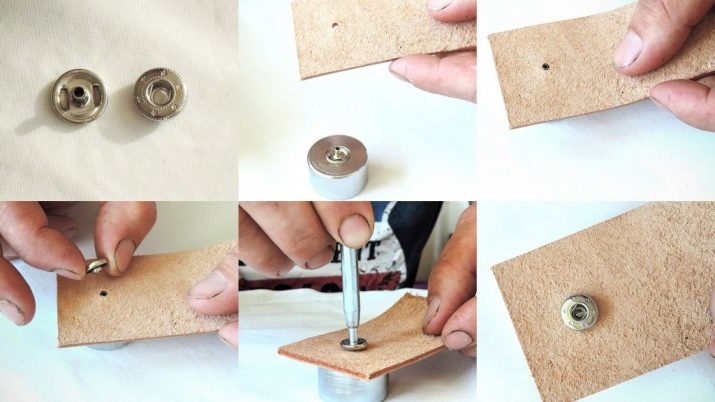
In this way, it is easy not only to replace the broken jacket from your favorite jacket, but also to decorate it. A beautiful drawing made with small metal rivets will refresh a piece of clothing that has been hanging in the closet for years, give a second life to an old belt or bag.







